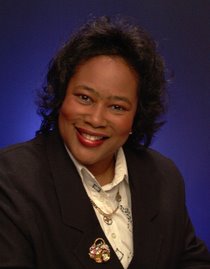Imagine trying something new because you’re bored! That’s what the
Inspired by the dolls displayed all around the classroom, she made elinor’s Victorian Doll—a character that was perfect for creative self-expression. That experience showed Nathasha that the sewing skills she had as a quilter were enough to enable her to make her first doll. Enthralled with and proud of that effort, she quickly caught “doll fever,” and sought out doll-related events ever since.
After acquiring the tools of the craft, she embarked upon a series of fabric shopping sprees to build up her fabric stash, and she took every dollmaking class offered. That evolved into traveling across the country to study with some of the most celebrated teachers such as Gloria “Mimi” Winer, Jesse Chandler, Leslie Molen, Anne Hesse, Monika Shedden, Kat Bunker, Christine Shiveley, and more.
The turning point for Nathasha was having received a call from a Hoffman Challenge judge who told her that her doll would’ve placed (and traveled to 31 cities for exhibition), but the doll’s neck was weakened by bad packing by a professional shipping service. The judge praised her use of color and workmanship. Although the doll didn’t make the challenge that year, it gave Nathasha the confidence she needed that her work was worthy of being complimented by professional artists, and that it was more than just a hobby.
Over the years, Nathasha’s vision has changed from that of a hobbyist to that of an artist. Where she used to make “cute” dolls as a source of fun and to de-stress, now, she makes them for exhibitions, to sell, and she’ll even accept commission as her time permits. Her work has grown tremendously from making basic dolls with a few changes, to art dolls with many changes, or some degree of redesign.
Currently, the hallmark of her work is the use of bright, vibrant colors. She loves the use of funky-colored fabrics with interesting designs or patterns. She mainly works with cottons, but is now also experimenting with many kinds of fabrics, beading, unique fibers, found objects, and even textured papers where possible. She brings another interesting element to her dollmaking: writing and storytelling. Nathasha is also an award-winning romance author, so all of her dolls have stories. She brings them to life with her brand of characterization, upbeat dialogue, humor, and a fast-moving plot.
Indeed, dollmaking has become her vice of choice, and she goes at it full throttle when stressed. It has helped her get through the pain of a divorce, her father’s death, the loss of her baby, and family illnesses. The friends she has made through this art are wonderful, and she wouldn’t trade them for anything. Ditto for the places she has been to and seen as a result of traveling to partake of one doll-related event or activity or another.
She is presently the secretary of the 3D Doll Club in



